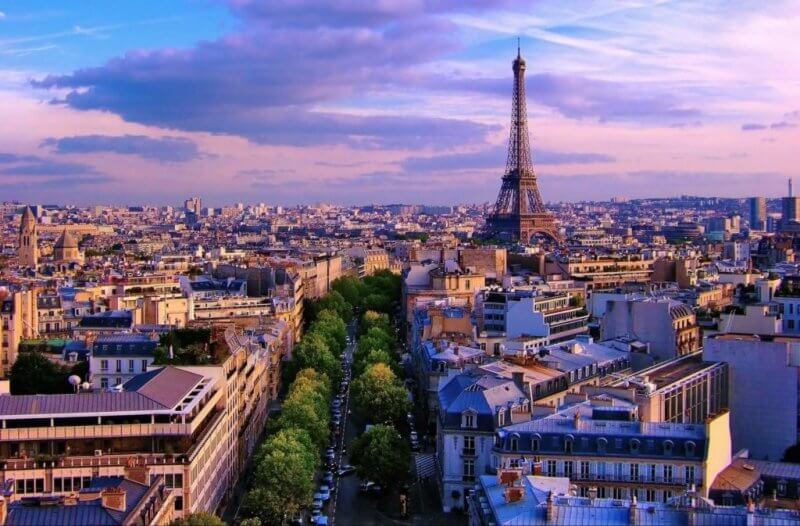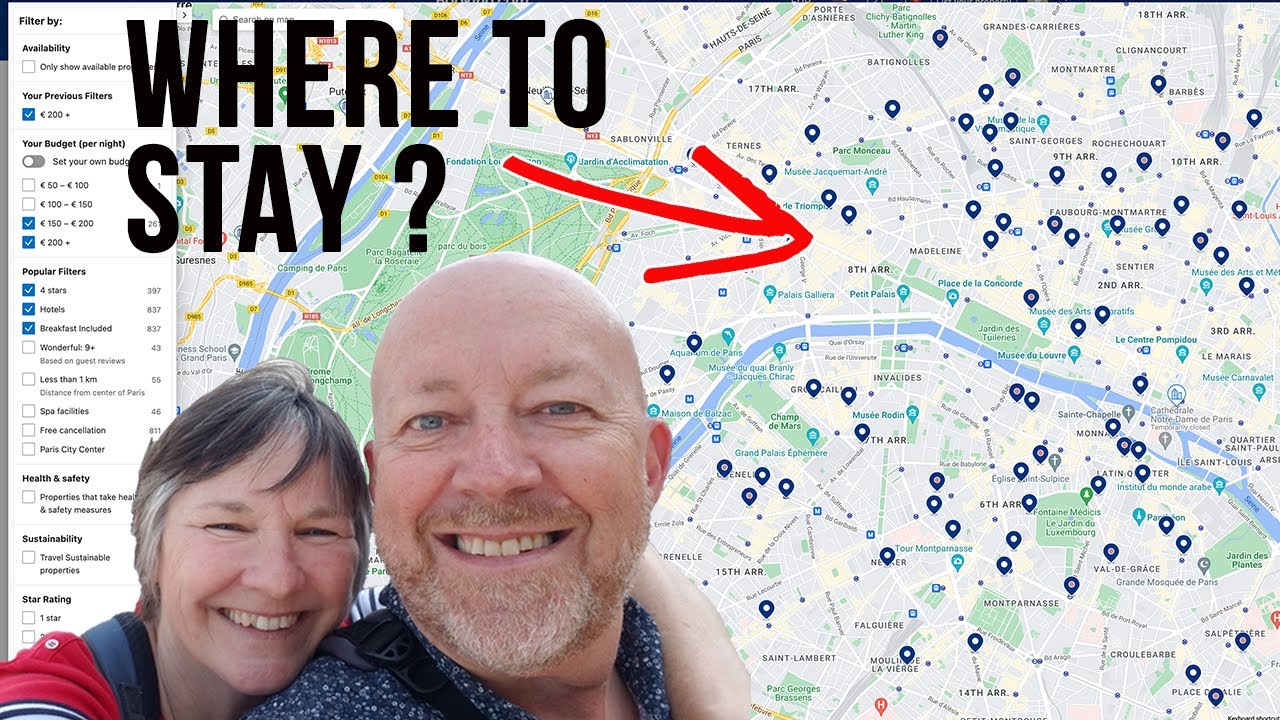If you are planning a tourist trip to Paris, you will have to decide which city area to stay in. It is important to understand what you expect from your trip and make a decision based on that. You will need to take into account the prices in hotels, distance from the main attractions, availability of public transport and other important points for you. This article describes the best areas of Paris for tourists to live in – you may find this information useful.
Administrative system of Paris
The first administrative formation of Paris took place in 1795. In 1859, several nearby communes were added to the city, thanks to which its area increased 2.5 times, and the number of inhabitants exceeded 1 million.
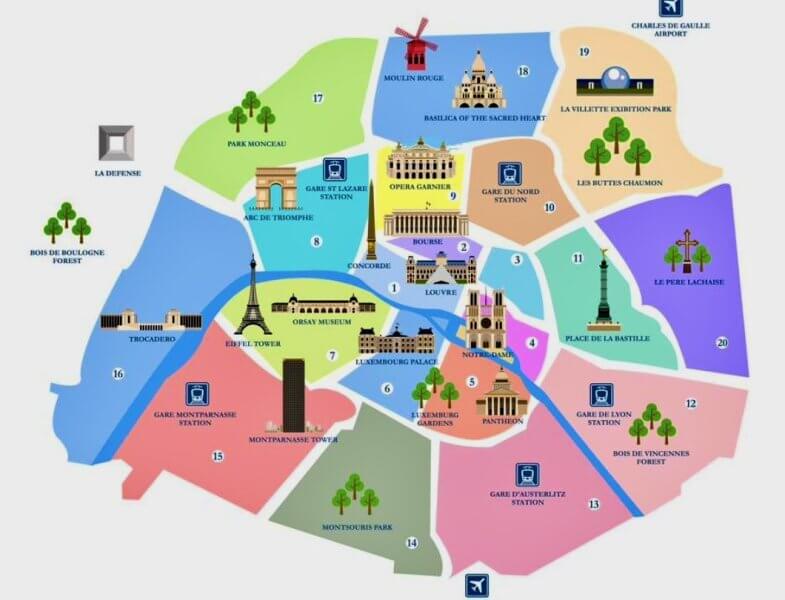
In the same year, a resolution was adopted, according to which all the old and recently annexed territories were transformed into 20 municipal districts.
- I – Louvre Museum. This is the historic district of the city of Paris with its main significant places: the Louvre, the Tuileries Garden, the Place Vendome.
- II – Burs. Prestigious, although the smallest of all the districts – its area is only 99 hectares. The Paris Bourse is located there, and there are many banks.
- III-The Temple. The trendy area, located next to the Gare du Nord train station, is populated by a large gay and Jewish community.
- IV-Hotel de Ville. The historical part of Paris with the City Hall, the bohemian Marais quarter, the Cathedral of Notre-Dame de Paris and part of the Latin Quarter with inexpensive restaurants.
- V – The Pantheon. The busiest part of Paris with the best educational institutions and numerous cafes. The eponymous landmark of the capital is also located here.
- VI-Luxembourg. Quiet neighborhoods with the Luxembourg Gardens and the Boulevard Saint-Germain stretching along the Seine.
VII-The Palais Bourbon. The district where the main attraction of France – the Eiffel Tower, as well as the country’s ministries and embassies of foreign states-is located. - Saint-Elysee is a part of Paris with the famous Champs-Elysees and the Elysee Palace, as well as a high concentration of expensive and prestigious boutiques.
- IX-Opera. There are many offices and giant supermarkets on this territory.
- X-Anklo-Saint-Laurent (Entrepo). Emigre neighborhoods with the largest indoor market in Paris: Marche-Saint-Quentin.
- XI-Popincourt. The most densely populated student district.
- XII-Reyes. This is an area with a huge number of green areas and the best housing in Paris.
- XIII-Tapestry. The unofficial name is Chinatown, as the usual high-rise buildings there are inhabited by immigrants from Asia.
- XIV-Observatoire. An area known for a large number of art studios and musical theaters.
- XV – Vaugirard. The largest of all the districts with an area of 850 hectares.
- XVI-Passy. This area is home to some of the city’s most affluent neighborhoods.
- XVII – Batignolles-Monceau. Quite a quiet area where Parisian inhabitants live.
- XVIII – Butte-Montmartre. Bohemian area, famous for cozy art cafes and creative workshops of famous artists.
- XIX-Butte-Chaumont. The area is full of good modern housing and large parks.
- XX – Menilmontan. A part of the city where a lot of migrants live.
The first arrondissement is located in the central part of Paris, on the territory of the right (northern) bank of the Seine River. All subsequent ones are arranged in the form of a spiral, twisted clockwise. Each district consists of 4 blocks.
Best areas to stay in
Where to stay in Paris, which of the 20 arrondissements is best suited for settlements? Let’s try to understand this.
First District
This historical part of Paris remains the most attractive for tourists, because there are the most significant places and monuments of the city. For example, the Louvre Museum with the world-famous Mona Lisa, Place Vendome with shining jewelry boutiques, Saint-Chapelle with impressive stained glass windows, the Tuileries Garden with comfortable and cozy sites for relaxation, the elegant arcade Galerie Vero Dodat.
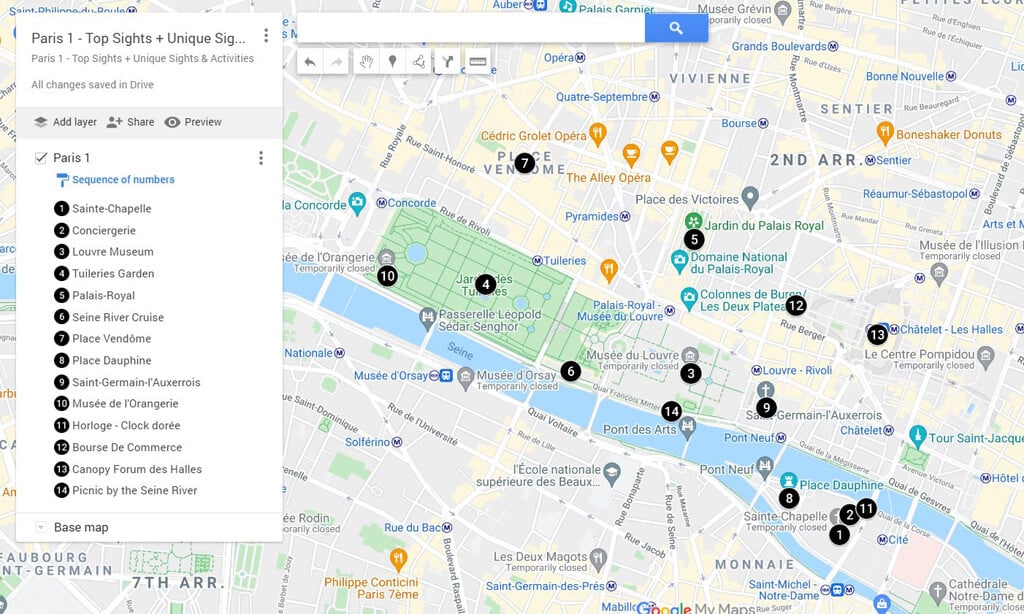
In this part of Paris, the best luxury hotels are concentrated, living in which will be as comfortable as possible. But if you plan to stay in this area, you should keep in mind that it is crowded and noisy.
On all the streets in this part of the city there are good places to eat: small cafes, cozy bistros, Michelin restaurants.
Second District

This area of the French capital is also included in the list of the most prestigious in the city. It is considered a financial center: the Paris Stock Exchange operates there, there are many banks and offices. All historical monuments are close and easily accessible on foot.
There is a place to stay: there are many luxury hotels on the territory with excellent service and, accordingly, high prices.
Third District
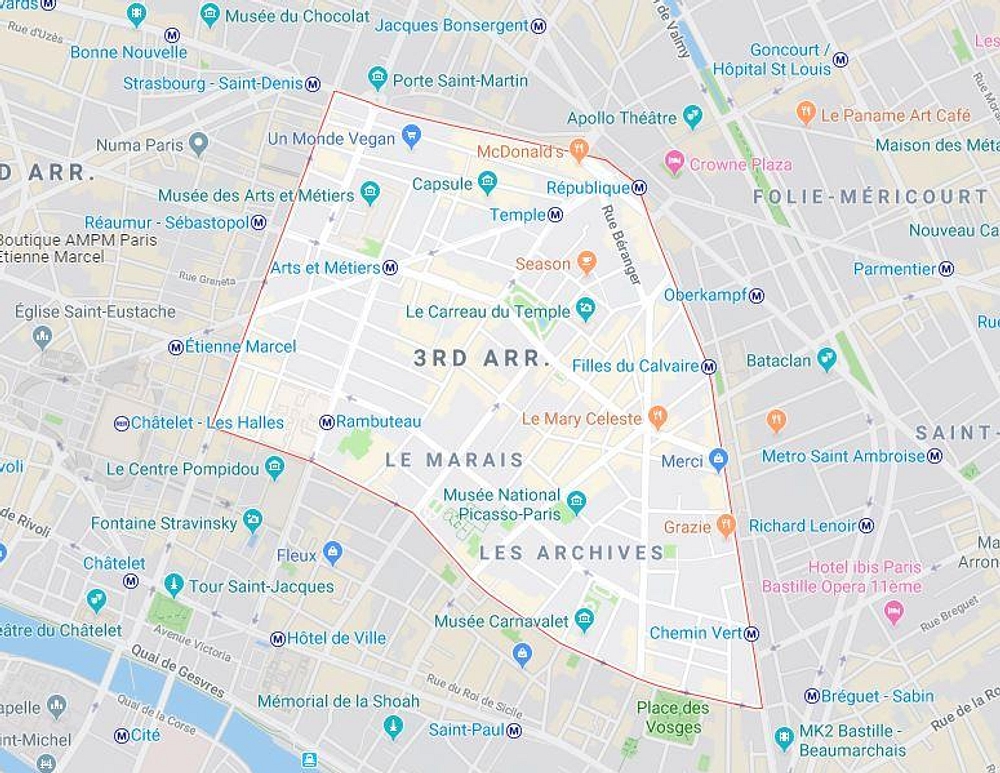
This is a district of Paris, also located in the center and having the status of a historical part of the city. On its territory is the Picasso Museum, the famous Marais quarter, two squares – Vosges and Republic. Very close to the city’s Gare du Nord train station.
Although most of the popular tourist spots are very close by, this area is not as bustling as the previous ones. There are fewer hotels there, but room rates are more affordable. These are good enough conditions to stay in this particular part of Paris.
Fourth District
The city hall is located on the territory of this district, so it is considered not only historical, but also official. The list of iconic places is quite extensive: the Marais quarter of the Middle Ages, the Church of Notre-Dame de Paris, the Place de la Bastille, the Pompidou Center for Contemporary Art.
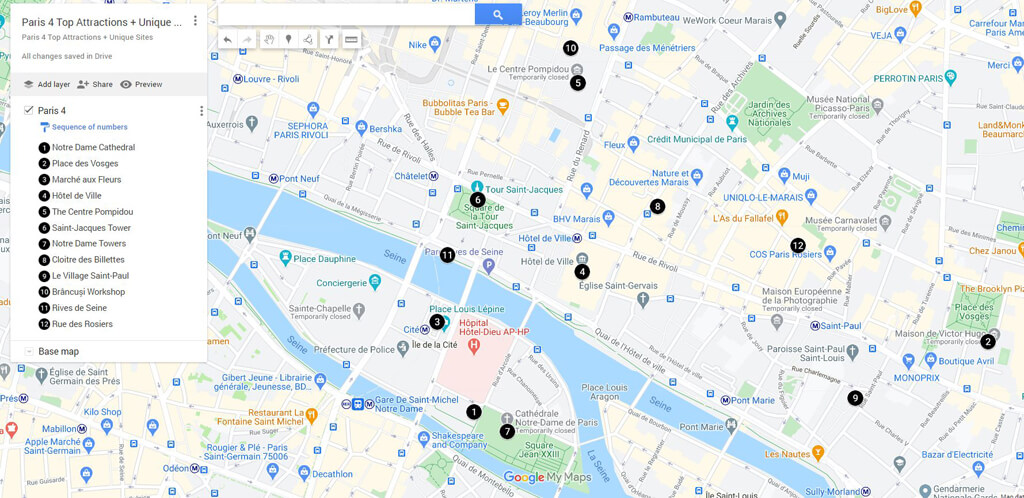
The fourth district partially includes the Latin Quarter, which is recognized as the best entertainment center for young people. There are many places such as bars, night clubs, discos and restaurants where you can have a good and inexpensive time. There is a wide range of options for where to stay, from budget hotels to luxury hotels.
One of the best places to settle in the historic district of the French capital is the small and very conveniently located island of Saint-Louis. With the Left and Right banks of the Seine, as well as with the island of Cité, it is connected by 6 bridges, which makes it possible to quickly and easily get to any part of Paris. Saint-Louis is a quiet residential area built up with elegant buildings from the 17th and 18th centuries. The first floors of these houses are occupied by cafes, shops, bakeries, as well as a few comfortable hotels.
Fifth and sixth districts
For those tourists who are looking for a cheap place to stay in Paris, the best choice is the Latin Quarter, which occupies a significant part of not only the fourth, but also the fifth and sixth arrondissements.
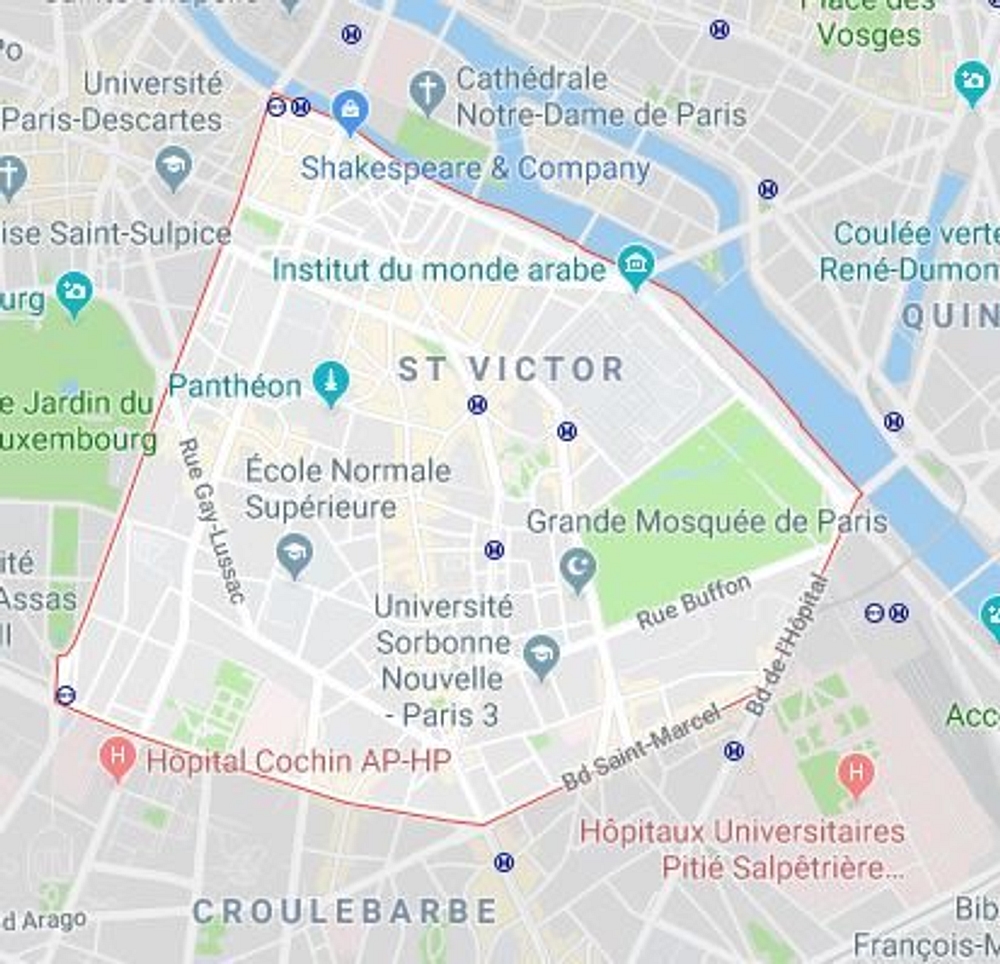
Since the Middle Ages, this area has remained a student area, so there are a lot of good places where you can get cheap food and settle down. At the same time, there are also chic expensive options where you can stay – for example, designer apartments.
The Latin Quarter is located near the Seine River, that is, all the historical sites of Paris are very close. And there are also many metro stations, so you can quickly get to other interesting, but more remote areas.
In addition, directly in this area there are enough attractive places for those who deserve attention. These are the Pantheon, the Arenas of Lutetia, the Palace of Cluny and the Roman baths, the National Museum of Natural History, the medieval Sorbonne University, the Church of Saint-Sulpice, the mosque with its luxurious park. There is also one of the best food markets in Paris and the famous Brasserie Lipp and Les Deux Magots restaurants.
Seventh District
This is another area where many travelers prefer to stay. In terms of prestige and popularity, as well as the number of attractions, it successfully competes with the first district. It is on its territory that the main symbol of France – the Eiffel Tower-is located. Of course, it can be seen from different parts of the city, but if you stay in a hotel near the Champ de Mars, you can admire the floating lace spire up close and at any time of the day.
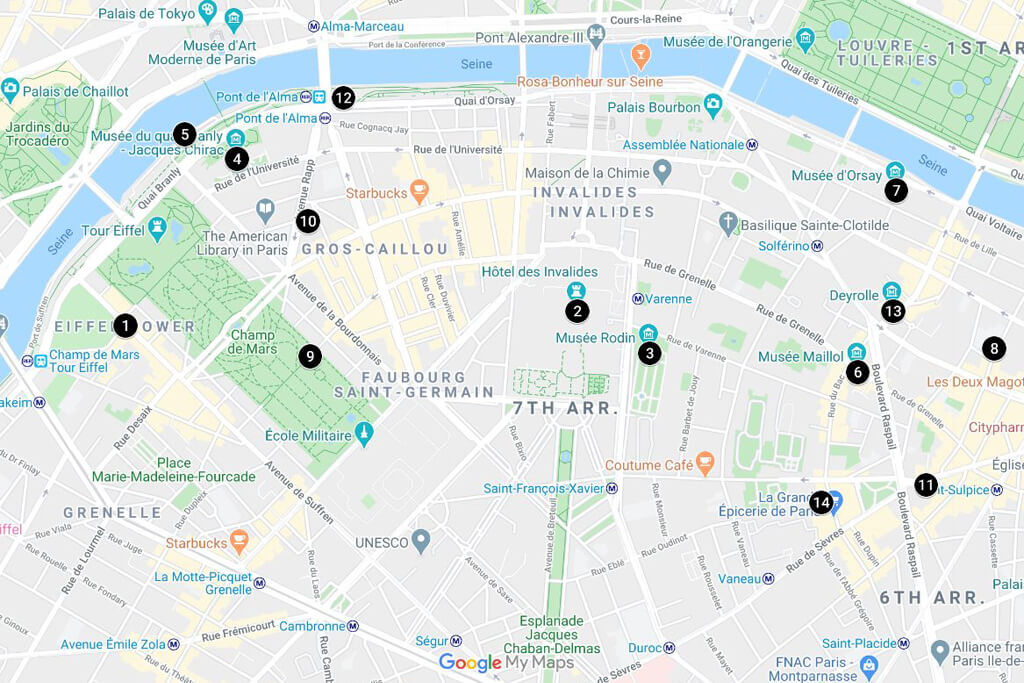
In addition, there are many other interesting places in this lively area, such as the Bourbon Palace and the Invalides. The list of museums working there is incredibly extensive: the Branly Museum, the Rodin Museum with a garden of statues, the d’Orsay Museum of Fine Arts with numerous masterpieces.
This area also offers the best opportunities for good shopping. There is the famous shopping street Rue Cler, there is a large-scale department store Bon Marché, there are many small boutiques. Here you can profitably buy French souvenirs.
Eighth District

This arrondissement, which borders the first one, is considered one of the most prestigious in Paris and is designed exclusively for rich people. They offer to stay there in luxury expensive hotels, but you can also find good housing at a relatively affordable price.
This 5-star area features the Arc de Triomphe, the Champs-Elysees and the Palace of the same name, the Luxor Obelisk and the famous Crazy Horse Cabaret. There is also a functioning Saint-Lazare train station built in 1837 and the popular Parc Monceau. The area is also known for the best haute couture houses in the world.
The sixteenth District
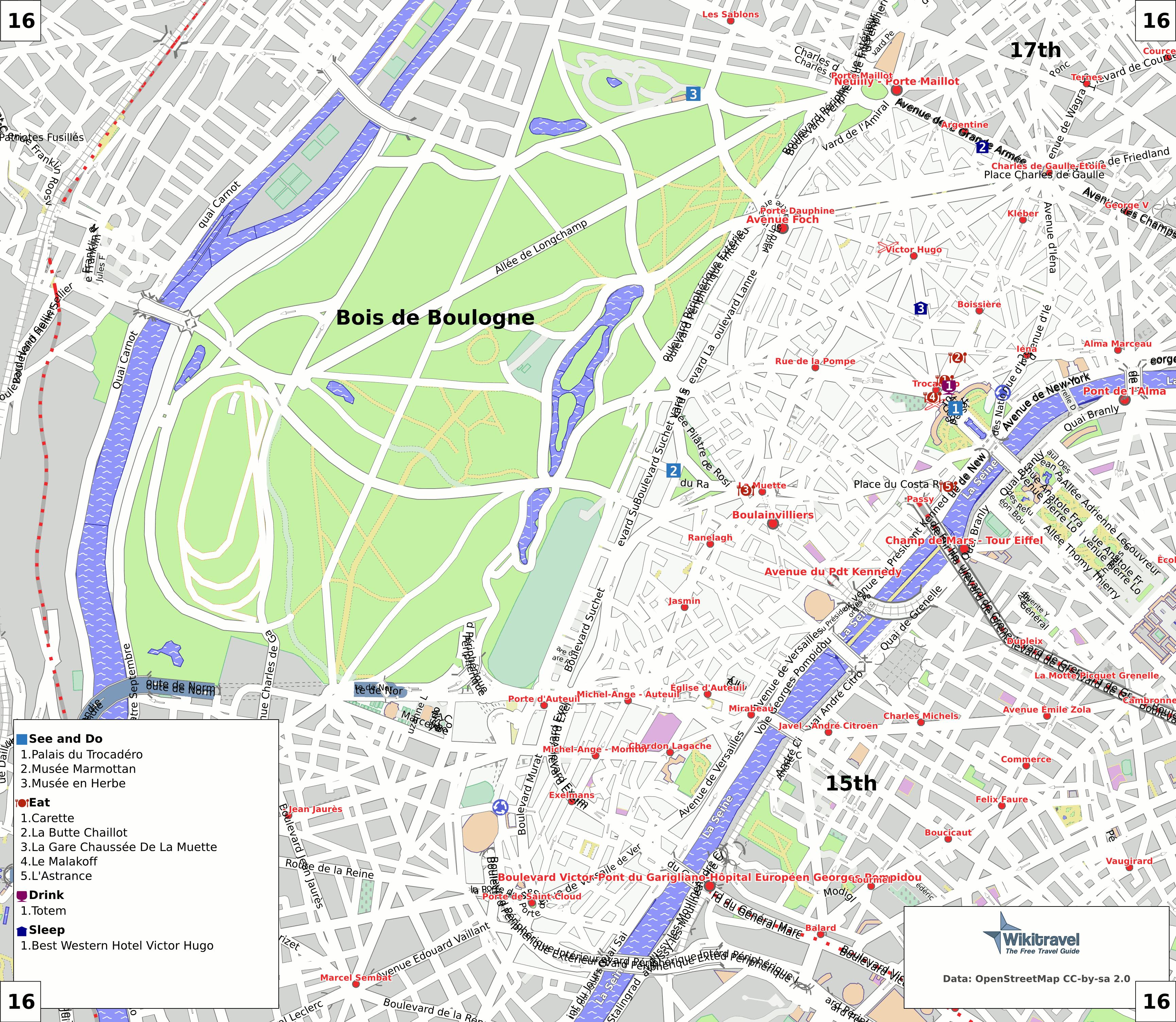
This area is also one of the most expensive, presentable, and best neighborhoods in Paris. The area has a convenient location and a well-organized transport interchange – this is important, because you will have to get to popular tourist places by public transport. But there are quite a lot of picturesque places for walking: the Bois de Boulogne, the Passi Park, the Auteuil greenhouse garden, the Trocadero gardens.
In this quiet and absolutely safe area, there is a wide selection of good hotels with a high level of service. It is recommended to stay there for families with children and people who are used to high comfort.
Eighteenth District
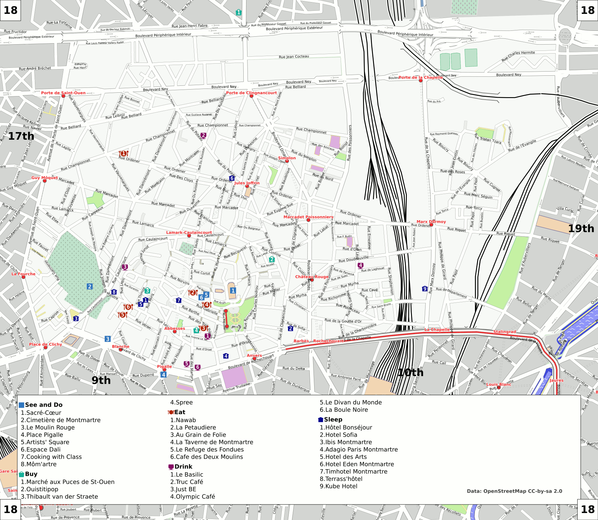
In a bohemian, but not very safe area of Paris, you can stay in two cases: if you plan an economical vacation and if you want to be closer to Montmartre. If you want a relaxing holiday, hotels on the hill are suitable, if you want entertainment-the best choice is a hotel near the Moulin Rouge cabaret. In any case, you will have to take the metro to the center of Paris to see the historical quarters.
But Montmartre also has a lot to see. For example, the Sacre Coeur Basilica, which can be reached by stairs or by funicular. You can walk around the Place du Tertre, where the best local artists make portraits of vacationers.
Conclusion
For those who do not like to read too long descriptions, we will summarize the above information:
- 1, 2, 7, 8 and 16 are prestigious and peaceful areas with expensive hotels and many historical monuments.
- 3, 5, 6-districts where you can stay in budget hotels and feel the charm of Paris.
- 4, 11, 18 – youth, noisy areas of Paris, where there are many diverse entertainment venues.
- 9, 12 to 15 and 17 – quiet, cheap and not at all tourist areas of Paris, far from the center.
- 10, 19, 20 – quite dangerous areas of Paris, completely unsuitable for accommodating vacationers.
What to See in Cannes in One Day – 15 Most Interesting Places

